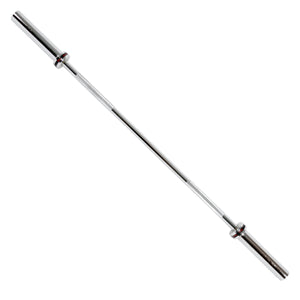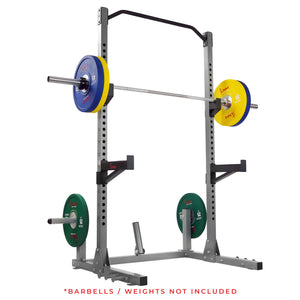Summer is just around the corner and enhancing and growing those glutes is a major goal for so many people. I’m here to tell you that it is possible to increase strong, lean muscle mass in your glutes with a glute-focused training strategy. Keep reading for my top 3 tips to form an effective strategy to get the booty gains you’re looking for.
Perfect Your Workout Form
So many people dive into a glute-growing routine, with lifting heavy as their major focus. While lifting heavy can contribute to glute gains, if you don’t exercise with proper form your results from any program will be limited. Basically, by moving your body in the wrong way, you aren’t going to get the glute activation you need to see the results you’re looking for.
Perfecting your exercise form is the biggest key in achieving maximal glute activation, and therefore seeing those booty gains. The bread and butter of proper exercise form and what I always teach my clients first is how to maintain neutral posture throughout exercise.
Neutral Posture
Most people have a natural curvature to their spine, but a controlled, neutral posture is the strongest position when sitting or standing, and the one that we are designed to move from. A neutral spine involves engaging the core to draw the spine into proper position. With that spine locked into that strong, neutral position, we limit motion of the spine, and maximize movement and energy in the area we’re specifically aiming to target - in this case the glutes!
To find your neutral spine follow along with the steps below.
- Lie on your back with your knees bent and feet flat on the floor, arms at your sides.
- Melt your body into the floor, your entire torso should be relaxed. This should feel natural, effortless.
- Take a deep breath, and exhale. As you exhale engage your lower abs, tucking your pelvis so that your lower spine touches the floor.
This is your locked and loaded neutral spine position. Practice the exercise above until you get the hang of it. You should be able to hold a neutral spine with regular breathing, and other movements such as marching your legs.
Once you learn how to control this position, you can and should use it as you’re standing, sitting, and through most exercises to perform them properly. This particular level of control over your body doesn’t usually come easy; but, continue practicing, you’ll get it eventually. You’ll be amazed at how much this position will help you to limit movement of the spine and really narrow in on glute specific activation through your exercises.
2. Lift Heavy
Now we’re getting to the good stuff, lifting heavy! What many people miss when interested in growing the glutes, is progressive overload. From a strength-training perspective, progressive overload is the process of continually challenging your muscles to lift heavier and get stronger.
The most defined, popping glutes you see at the gym are typically the strongest. Growth and strength are directly related. So, if you want to see growth, you should be continually upping the weight over time to consistently see results from your program.
For best results, aim for 3 sessions a week, with at least 48 hours of rest and recovery between each session. While hypertrophy training (medium rep/medium weight) is typically recommended to see growth-specific results, don’t feel the need to stay in one range of reps and sets. In fact, for a true progressive program that continues to make strength and growth gains over an extended period of time, you should be working your way through a variety of high rep/low weight (2-3 sets of 12-15 reps), medium rep/medium weight (3-5 sets of 8-12 reps), and low rep/heavy (3-5 sets of 5-6 reps) weight ranges.
This is not to say you won’t be in that hypertrophy zone throughout various phases of your training, it’s just that to see strength gains (and growth) over an extended period of time, a program with variety will keep you challenged, leading to strength and glute gains.
Whatever rep and set range you’re using, it’s important to remember the weight you choose should be a challenge. The last 2-3 reps of every set you complete should be a struggle, but not impossible. When it’s no problem to complete a set, it’s time to increase that weight!
3. Eat!
If you’re training for glute growth, you’re going to be working hard. Building new lean mass is a very demanding process; and, as we discussed above it requires constantly challenging your strength. If you’re undereating, you’re definitely not going to see your glutes grow.
If you’re eating on a weight loss mentality, you’re going to need to rethink your nutrition strategy. Your mindset needs to be closer to that of an athlete. You need to provide your body with the fuel it needs to repair and regrow stronger. Don’t be afraid to eat!
The body needs energy to power through workouts that result in stronger, bigger muscles. That energy comes from fueling your body with the high-quality nutrients it needs - complex carbs, protein, and fat.
When many people think of muscle building, they think of a high-protein diet. And protein is incredibly important to help repair and rebuild muscle tissue. If you’re looking to gain muscle mass, protein intake is essential.
However, carbs are also incredibly important in this process; and this is often missed by fitness newbies. Because dieting culture has ingrained into us, that carbs are ‘bad’. However, when it comes to gaining muscle and strength carbs are not the enemy!
Carbs prevent muscle degradation - which is literally the last thing you want if you’re trying to grow your glutes. They also provide the energy for optimal performance; and, for the heavy, hard work of glute building, performance is key. Finally, both carbs and protein play an essential role in muscle repair.
All that to say, make sure you’re fueling properly. Proper nutrition in combination with a solid fitness program that incorporates progressive overload and proper exercise form will lead to the glute gains you’re looking for. Happy booty building!
Looking for more? Check out this video for 3 glute building exercises with technique tips!

























Add Your Name & Email
Please enter your name and email to continue.We won’t display your email publicly.